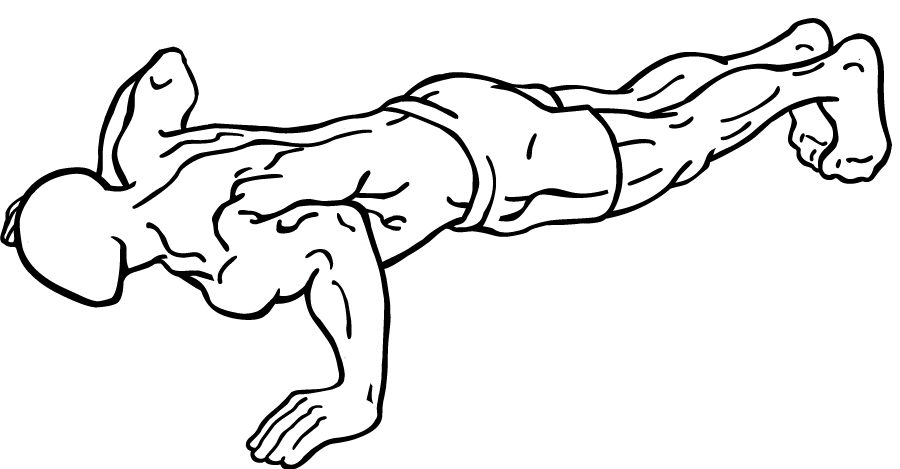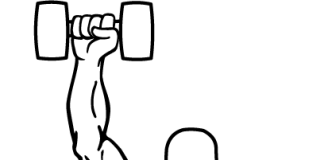Last Updated on September 29, 2014
Push-ups are one of the most fundamental bodyweight exercises that target multiple muscle groups simultaneously. From strengthening your chest, biceps, triceps, and shoulders to engaging your core, push-ups are versatile, adaptable, and effective. Whether you’re a beginner or an advanced athlete, mastering push-ups can dramatically enhance your upper body strength and endurance.
This guide, we’ll break down the benefits of push-ups, their proper technique, variations to keep things challenging, and how to integrate them into your fitness routine. Let’s dive into the details!
The Benefits of Push-Ups
Push-ups are more than just an upper body workout; they offer a wide range of benefits:
- Chest Development: Push-ups primarily target the pectoral muscles (chest). By varying hand placement and angles, you can engage different parts of the chest, helping to build and sculpt this muscle group effectively.
- Triceps and Biceps Activation: Push-ups work the triceps and biceps. As you push up from the ground, your triceps engage, while the biceps assist in controlling the movement.
- Core Engagement: When performed correctly, push-ups engage the core, promoting stability and strength in your abs and lower back.
- Shoulder Strengthening: The anterior deltoids (front of the shoulders) are activated during push-ups, building strength and stability in the shoulder region.
- Improved Posture: By engaging the upper body and core muscles, push-ups can improve posture, balance, and stability.
- Functional Strength: Push-ups mimic everyday movements, such as pushing yourself off the ground, making them practical and useful for building functional strength.
How to Perform a Basic Push-Up
Proper Technique
To maximize the effectiveness of push-ups and avoid injury, proper technique is crucial. Here’s a step-by-step guide:
- Starting Position:
- Lie face down on the floor or an exercise mat.
- Keep your feet together, and curl your toes so that you rise onto the balls of your feet.
- Position your hands shoulder-width apart, aligned with your chest.
- Engage Your Core:
- Draw your abs in, pulling your belly button towards your spine to stabilize your core.
- Your body should form a straight line from your head to your heels (like a plank). Avoid arching your back or letting your hips sag.
- Initiate the Push-Up:
- Inhale as you press into your hands, lifting your body off the ground until your arms are fully extended. Ensure your head and neck stay aligned with your body (avoid looking up or down).
- Keep your elbows at a slight angle (not flaring out completely) to protect your shoulders and engage your chest effectively.
- Lower Your Body:
- Exhale as you slowly lower your body back down, maintaining control. Aim to bring your chest close to the floor without touching it, ensuring your body remains in a straight line.
- Keep your core tight and your back flat throughout the movement.
- Repeat:
- Repeat the movement for as many repetitions as possible while maintaining proper form. Aim for 3 sets of 8-15 reps, depending on your fitness level.
Common Mistakes to Avoid
Even though it seems simple, it’s easy to make mistakes that can reduce effectiveness or cause injury:
- Arching the Lower Back: Allowing your lower back to sag can strain your spine. Engage your core to keep your body aligned.
- Flaring Elbows: Avoid letting your elbows flare out to the sides. This can stress the shoulder joints. Keep them at a 45-degree angle to your body.
- Head Position: Many people look up or drop their heads. Maintain a neutral neck position, aligning your head with your spine.
- Incomplete Range of Motion: Aim to lower yourself until your chest is near the ground. Partial reps won’t fully activate the muscles.
- Lifting Hips Too High: Don’t let your hips rise above your shoulders. A straight body line maximizes core engagement.
Push-Up Variations for All Levels
Whether you’re a beginner or an advanced athlete, there’s a push-up variation for you. Here are some to try:
1. Knee Push-Ups (Beginner)
For those new to push-ups, starting on your knees can help build the necessary strength.
- Start in a plank position but with your knees on the ground.
- Lower and raise your body as you would in a standard push-up.
- This variation reduces the load on your upper body, allowing you to focus on form and build strength.
2. Incline Push-Ups (Beginner)
Performing push-ups with your hands on an elevated surface (like a bench or box) decreases the amount of body weight you have to lift, making it easier.
- Place your hands on a bench and your feet on the floor.
- Lower your chest towards the bench and push back up.
3. Wide-Grip Push-Ups (Intermediate)
This variation targets the outer chest muscles more effectively.
- Position your hands wider than shoulder-width.
- Lower your body as usual, focusing on engaging the chest muscles.
4. Close-Grip Push-Ups (Intermediate)
Also known as diamond push-ups, this variation emphasizes the triceps.
- Bring your hands closer together, forming a diamond shape with your thumbs and index fingers.
- Lower yourself down and push back up, keeping your elbows close to your body.
5. Decline Push-Ups (Advanced)
Placing your feet on an elevated surface increases resistance, challenging your upper chest and shoulders.
- Place your feet on a bench or step while your hands remain on the ground.
- Perform push-ups as usual, focusing on keeping your core tight.
6. Plyometric Push-Ups (Advanced)
This explosive variation builds power and speed.
- Perform a regular push-up, but as you push up, use enough force to lift your hands off the ground.
- Land softly and immediately lower into the next rep.
Push-Up Challenges for Progressive Growth
To build strength, endurance, and muscle, progressively increase the difficulty of your push-ups. Here are some challenges to try:
- 30-Day Push-Up Challenge:
- Start with 10 push-ups on Day 1.
- Add 2 push-ups each day until you reach Day 30.
- Aim to maintain proper form throughout the challenge.
- Pyramid Push-Ups:
- Perform 1 push-up, rest for 10 seconds, then 2 push-ups, rest, and continue until you reach your max. Then, work your way back down to 1.
- This builds endurance and muscular stamina.
- Time-Based Challenge:
- Set a timer for 60 seconds and do as many push-ups as possible.
- Aim to increase your total count each week.
Integrating Push-Ups Into Your Workout Routine
Push-ups can be incorporated into various workout routines, whether you’re aiming for strength, endurance, or muscle growth:
- As a Warm-Up:
- Use push-ups to warm up the upper body before a more intense workout.
- Perform 2-3 sets of 10 reps to get your blood flowing and muscles activated.
- Circuit Training:
- Incorporate push-ups into a circuit routine with other bodyweight exercises like squats, lunges, and planks.
- Example Circuit: 10 push-ups, 15 squats, 20 lunges, 30-second plank. Repeat for 3-4 rounds.
- Superset Push-Ups:
- Pair push-ups with another upper body exercise (like pull-ups) for a superset.
- Example: 10 push-ups followed immediately by 10 pull-ups, then rest for 60 seconds. Repeat for 3-4 sets.
The Science Behind Push-Ups
Push-ups are classified as a compound movement, engaging multiple muscle groups simultaneously. They primarily work the pectoral muscles (chest) while engaging the deltoids (shoulders), triceps, and biceps. Additionally, when performed with a tight core and proper form, they also target the abdominal and lower back muscles, making push-ups a full-body exercise.
By practicing progressive overload (increasing reps or using variations like decline or weighted push-ups), you can stimulate muscle growth and strength development over time. Push-ups also enhance muscular endurance, which is crucial for improving overall fitness levels.
Mastering push-ups is not just about building a strong chest—it’s about enhancing upper body strength, improving core stability, and creating a well-rounded fitness routine. By understanding the proper technique, avoiding common mistakes, and challenging yourself with variations and routines, you can make push-ups a cornerstone of your workout plan.








